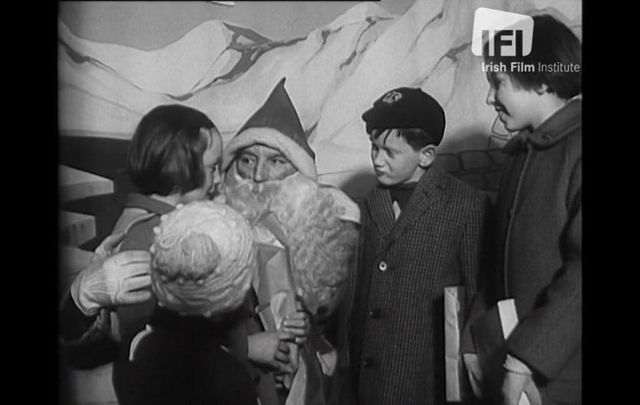“Christmas in the City," now available to watch for free on the Irish Film Institute's IFIPlayer, shows us the magic of an Irish Christmas.
In December 1963, when Dublin was humming with excitement as crowds gathered in their droves to see the Christmas lights adorn the streets, Amharc Éireann (A View of Ireland) was on hand to capture the buzz.
In the Irish language short newsreel “Christmas in the City,” we see Henry Street overflowing with busy shoppers, enticed by the winter wonderland window displays and bargains at the market stalls on Moore Street.
Children eagerly wait to meet Santa in his grotto, while others test out the selection of toys on show.
There was magic in the city and spirits were high as the shops were thronged with shoppers looking for that perfect gift for their special someone.
About Gael Linn and Amharc Éireann
Gael Linn was established in 1953 to promote Irish language and culture. Co-founder and first manager, Riobard Mac Góráin, immediately realised the importance of promoting the language through entertainment and popular media. Gael Linn’s initial foray into production was the first regular indigenous cinema newsreel since the Irish Events series of the 1920s.
In 1955 Ernest Blythe, Chairman of Comdhail Naisiunta na Gaelige, lent Gael Linn £100 to produce a short film for cinema and the Amharc Éireann (A View of Ireland) newsreel was born.
From 1956 to mid-1957, Amharc Éireann consisted of short single-story items that were distributed to cinemas throughout the country on a monthly basis. Their popularity was immediate and by mid-1957 the Rank Film Distributors agreed to supply them to Irish cinemas along with their own newsreel, at which point they became issued on a fortnightly basis.
By 1959, the success of this home-grown newsreel resulted in it being produced weekly and it expanded to include 4 separate news stories. The series continued until 1964 when the immediacy of television as a means of relaying news to the Irish population rendered the newsreel obsolete.
Produced by Colm O’Laoghaire, a total of 267 editions of Amharc Éireann were made. Although Gael Linn’s Amharc Éireann production ceased in late 1964, its influence is ongoing. The range of Irish interest subjects covered (from hard news stories to more magazine-like items) provide a vivid window into the development of modern Ireland at a particularly progressive point in its development and provide a first-hand insight into the moral, cultural, and economic development of the country throughout the Whittaker and Lemass eras.
You can learn more about the Gael Linn Collection from The Irish Film Institute here.
The video below is published with thanks to the Irish Film Institute (IFI), who IrishCentral have partnered up with to bring you a taste of what their remarkable collection entails. You can find all IrishCentral articles and videos from the IFI here.
To watch more historic Irish footage, visit the IFI Player, the Irish Film Institute’s virtual viewing room that provides audiences around the globe free, instant access to Irish heritage preserved in the IFI Irish Film Archive. Irish Culture from the last century is reflected through documentaries, animation, adverts, amateur footage, feature films, and much more. You can also download the IFI Player Apps for free on iPhone, Android, Apple TV, Amazon Fire TV, and Roku.
IrishCentral has partnered up with the IFI to bring you a taste of what their remarkable collections entail. You can find all IrishCentral articles and videos from the IFI here.
* Originally published in 2020, updated in Dec 2023.




Comments